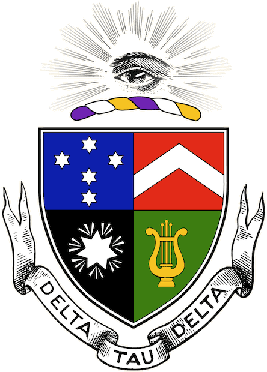
Delta Tau Delta (ΔΤΔ) is a United States-based international Greek letter college fraternity. Delta Tau Delta was founded at Bethany College, Bethany, Virginia, in 1858. The fraternity currently has around 130 collegiate chapters and colonies nationwide, with an estimated 10,000 undergraduate members and over 170,000-lifetime members. Delta Tau Delta is informally referred to as "DTD" or "Delts."
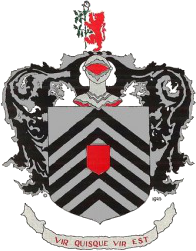
Theta Kappa Nu (ΘΚΝ) fraternity was an American national collegiate fraternity founded in 1924 by delegates from eleven local fraternities. It merged with Lambda Chi Alpha in 1939.

Theta Kappa Psi Medical Fraternity, Incorporated, (ΘΚΨ) is a North American professional medical fraternity. As of 2023, it operates as an independent local fraternity with one active chapter.
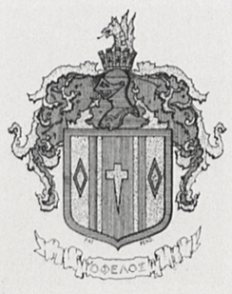
Theta Upsilon Omega (ΘΥΩ), was a national collegiate fraternity in the United States. Representatives of several local fraternities at a December 1, 1923 meeting of locals, organized by the National Interfraternity Conference, determined to form a new national through amalgamation, resulting in the creation of Theta Upsilon Omega on May 2, 1924.

Phi Alpha Gamma (ΦΑΓ) was a professional fraternity for homeopathic medicine founded at the New York Homeopathic Medical College in 1894. Once the largest medical fraternity in the United States, It merged with Phi Chi in 1948.
This article describes smaller collegiate sororities created in the nineteenth century and early to middle twentieth century on campuses in the United States and Canada. These sororities are defunct. Individual chapters may have affiliated with National Panhellenic Conference (NPC) sororities.

Delta Sigma Epsilon (ΔΣΕ) was a national collegiate social sorority founded at Miami University, operating in the United States from 1914 to 1956. It was originally a member of the Association of Education Sororities (AES) before the AES's merger with the National Panhellenic Conference, and most of its chapters were located at teaching colleges. The sorority was absorbed by Delta Zeta sorority on August 21, 1956.
Phi Omega Pi (ΦΩΠ) was a national collegiate sorority operating in the United States from 1922 until 1946 when its chapters were absorbed by several larger sororities, and merged with the national sorority, Delta Zeta.

Theta Upsilon (ΘΥ) was a national women's fraternity operating in the United States from February 1921 until May 1962, when the group was absorbed by the Delta Zeta sorority.
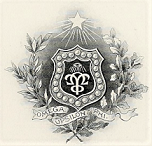
Omega Upsilon Phi (ΩΥΦ) was a professional medical fraternity founded at the University at Buffalo in 1894. It merged with Phi Beta Pi in 1934.

Alpha Lambda Tau (ΑΛΤ) was a men's college fraternity founded in 1916 at Oglethorpe University. For its first decade Alpha Lambda Tau permitted expansion only within the southern states. At the start of its fourth decade, in 1946, the national organization of Alpha Lambda Tau dissolved; the majority of its chapters affiliated with Tau Kappa Epsilon.

Kappa Sigma Kappa (ΚΣΚ) is the name of three separate college fraternities, sharing a common history and traditions but disconnected by decades and a break in organizational continuity. The original incarnation of Kappa Sigma Kappa was formed at Virginia Military Institute on September 28, 1867. Most of its active chapters merged into Phi Delta Theta in 1886.

Alpha Kappa Pi (ΑΚΠ) was an American collegiate social fraternity founded in 1921 at the Newark College of Engineering. In 1946, it merged with Alpha Sigma Phi.

Beta Kappa (ΒΚ) was an American social fraternity founded at Hamline University in 1901. It merged with Theta Chi in 1942.
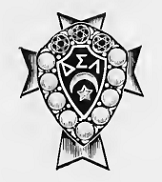
Delta Sigma Lambda (ΔΣΛ) was a social fraternity founded on September 9, 1921, formed entirely of members of the Order of DeMolay. It continued for about fifteen years, numbering 12 chapters in its rolls, with several closing in the early years of the Great Depression. Delta Sigma Lambda's remaining chapters either disbanded or were absorbed by other fraternities by 1937.

Sigma Tau Phi (ΣΤΦ) was a historically Jewish fraternity founded in 1918 and which merged into Alpha Epsilon Pi (ΑΕΠ) in 1947.
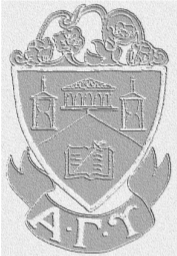
Alpha Gamma Upsilon (ΑΓΥ) was a social fraternity founded in 1922 at Anthony Wayne Institute in Fort Wayne, Indiana. In May 1965, it was absorbed in part by Alpha Sigma Phi (ΑΣΦ).
Beta Phi Delta (ΒΦΘ) was a three-state regional American fraternity, established in 1917. It ceased operations in 1948 with four remaining chapters. Of these, three would go on to merge into other national fraternities.

















